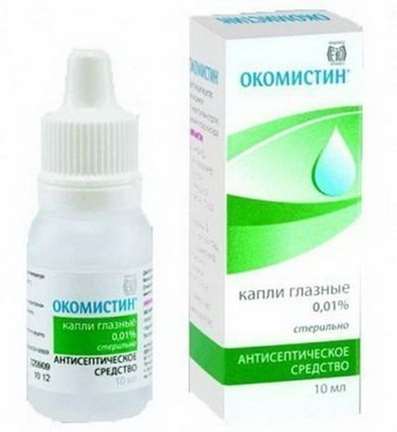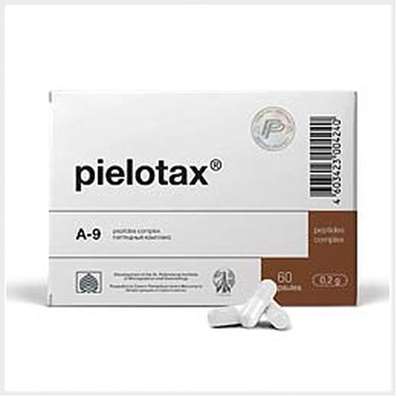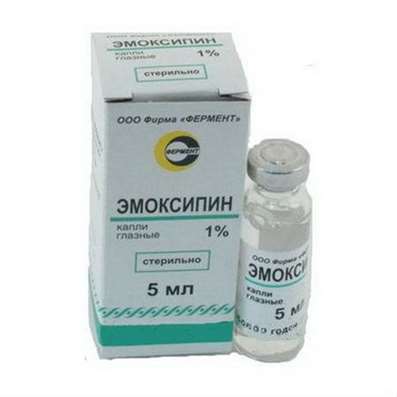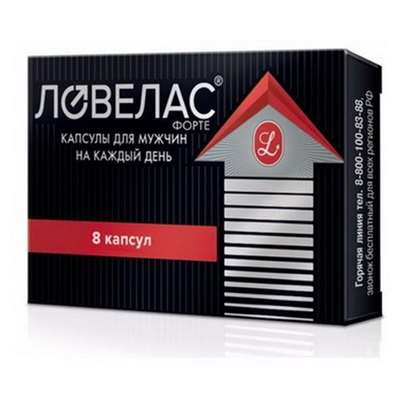Instruction for use: Raptiva
I want this, give me price
Dosage form: Lyophilizate for the preparation of a solution for subcutaneous administration
Active substance: Efalizumabum
ATX
L04AA21 Ephalizumab
Pharmacological group:
Immunodepressants
The nosological classification (ICD-10)
L40 Psoriasis: Chronic plaque psoriasis with diffuse; generalized psoriasis; Psoriasis of the scalp; hairy parts of the skin; A generalized form of psoriasis; Psoriazoformny dermatitis; Psoriasis complicated with erythroderma; disabling psoriasis; Isolated psoriatic plaque; Eksfolliativny psoriasis; psoriatic erythroderma; Psoriasis with eczematization; Hyperkeratosis in psoriasis; Inverse psoriasis; Psoriasis ekzemopodobnye; dermatoses psoriazoformny; Psoriasis genitals; Psoriasis lesions with hairy areas of the skin; erythrodermic psoriasis; Chronic psoriasis of the scalp; Chronic psoriasis; ordinary psoriasis; refractory psoriasis; Koebner phenomenon; psoriasis
Composition and release form
Lyophilizate for the preparation of a solution for subcutaneous administration 1 vial.
Efalizumab 125 mg
Excipients: L-histidine hydrochloride monohydrate, sucrose, L-histidine, polysorbate 20
Solvent: water for injection - 1.3 ml
In the vial (complete with a solvent, syringe, needle); In a pack of cardboard 1 or 4 sets.
Description of dosage form
Liofilizate for the preparation of solution for SC injection - a mass of white or white with a yellowish hue of color.
Characteristic
Selective immunosuppressant. It is a humanized monoclonal antibody (IgG1 immunoglobulin) obtained by biotechnology using Chinese hamster ovary cells.
Pharmachologic effect
Mode of action - Immunosuppressive.
Pharmacodynamics
Ephalizumab specifically binds to protein structures - CD11a (a subunit of the LFA-1 molecule), which are expressed on activated T lymphocytes. Efalizumab inhibits the binding of LFA-1 to ICAM-1, intercellular adhesion molecules expressed on keratinocytes and activated vascular endothelial cells. By blocking the binding of these cell structures, ephalizumab inhibits the interaction of activated T lymphocytes with other types of cells, in particular keratinocytes and vascular endothelial cells, by suppressing the functional activity of T-helpers, natural killers, cytotoxic T cells, blocking the release of lymphocytes from the vascular bed. By suppressing the functional manifestations of activated T-lymphocytes, ephalizumab affects the immunological processes and helps to reduce the severity of symptoms and clinical manifestations of psoriasis. With the use of Rappti, the symptoms of inflammation decrease and the condition of affected areas of the skin improves.
Pharmacokinetics
Efalizumab has non-linear pharmacokinetic characteristics.
Distribution. The average bioavailability of efalizumab is 30-50%.
After sc administration of an initial dose of 0.7 mg / kg and subsequent weekly doses of 1 mg / kg of CSS efalizumab in the serum was achieved after 4 weeks, the mean concentration and Cmax were approximately 9 and 12 μg / ml, respectively. The clearance when reaching CSS was 24 ml / kg / day (in the range from 5 to 76 ml / kg / day).
Excretion. T1 / 2 efalizumab after the administration of the last dose under equilibrium conditions averaged 25 days (ranging from 13 to 35 days).
The clearance of the drug is largely dependent on the body weight, which confirms the need for calculating the dose, taking into account the patient's body weight.
Indication of the drug Raptiva
Treatment of psoriasis (plaque psoriasis) of moderate to severe severity in adults.
Contraindications
Malignant neoplasms;
Severe infectious diseases (including sepsis, tuberculosis, hepatitis B, hepatitis C).
Application in pregnancy and breastfeeding
It is not recommended to use raptiva during pregnancy.
There is no evidence of a teratogenic effect or a negative effect on the reproductive system.
Women of childbearing age who receive Raptiva are recommended to use reliable methods of contraception.
It is not known whether efalizumab is excreted in breast milk. Because immunoglobulins usually penetrate into breast milk, if you need to use the drug during lactation, breastfeeding should be discontinued.
Application for violations of the liver and kidneys
The experience of using the drug in patients with hepatic and renal insufficiency is absent.
Side effects
Flu-like symptoms: 43% of cases - mild or moderate headache, fever, chills, nausea, muscle pain. The severity of these symptoms is dose-dependent.
In multicenter, placebo-controlled clinical trials, these reactions were observed 20% more frequently than in the placebo group, the duration of therapy was 12 weeks. Symptoms were more often observed after the first injection, almost 2 times less - after the second injection and were comparable in frequency with the group receiving the placebo. The predominant symptom was a headache. Only in 5% of cases, these symptoms were regarded as severe, less than 1% - they caused the drug to be discontinued.
On the part of the hematopoiesis system: in 50% of cases - asymptomatic lymphocytosis (2.5-3.5 times higher than the upper limit of the norm). The number of lymphocytes returned to the baseline after the cessation of therapy. Less often - a slight increase in the absolute number of neutrophils and eosinophils.
From the coagulation system: in 0.3% of cases - thrombocytopenia (less than 52 109 cells / l), which can be accompanied by ecchymosis, spontaneous hemorrhages, bleeding from the mucous membranes.
From the side of the liver: in 3.5% of cases - increased activity of alkaline phosphatase; In 1.7% of cases - increased ALT activity. The significance of these indicators returned to the baseline after the cessation of therapy.
Allergic reactions: in 8.3% of cases (2.8% more often than in the group receiving placebo) - urticaria, skin rash.
Other: the incidence of malignant tumors was approximately the same in the groups receiving Raptiv (1.8 / 100 patient-years), and in placebo groups (1.6 / 100 patient-years).
Interaction
Special studies to study the interaction of Raptiva with other drugs have not been conducted.
Data on the use of Rapptides concomitantly with preparations for the treatment of psoriasis of systemic action (cyclosporine, methotrexate), and also PUVA-therapy are absent. Therefore, the drug should not be used in this combination.
Raptiv can be used in combination with corticosteroids for topical application and ointments on tar.
Dosing and Administration
SC. Treatment is carried out under the supervision of a doctor who has experience in the use of immunomodulating drugs of systemic action in psoriasis.
The initial dose is 0.7 mg / kg, all subsequent injections are 1 time / week at a dose of 1 mg / kg.
The duration of the first course of treatment is usually 12 weeks. In the case of a positive effect, it is recommended to continue therapy to maintain the achieved level and further improve the condition.
If no therapeutic effect is observed after 12 weeks (decrease of PASI index by less than 50%), the use of Raptiva should be discontinued. Experience with Rapptives in combination with cyclosporine, methotrexate, PUVA-therapy and other drugs for the treatment of psoriasis is absent.
It is necessary to control the number of platelets in the initial stage of therapy and then regularly during therapy (during the first 3 months - every month, then every 3 months) and white blood cells (1 every 3 months).
In the treatment of elderly patients, the dose and schedule of administration of the drug correspond to those indicated for adult patients.
Rules for solution preparation and drug administration
The introduction of Raptiva by a nurse or the patient himself should be done only after a thorough study of the instructions for the procedure, the correct dose set and the technique of injection.
The initial stage of therapy is carried out under the supervision of a doctor specializing in this field.
The preparation of Raptiva is intended for subcutaneous administration using a sterile disposable syringe and needles supplied in the kit. It is necessary to alternate the areas of administration of the drug.
1. Dissolve lyophilizate with the supplied solvent, should be performed immediately before injection. The concentration of the finished solution is 100 mg / ml.
The rape should not be mixed with other medicinal products or the lyophilisate must be dissolved with other solvents.
To dissolve the lyophilizate, remove the protective cap from the vial of the Raptiva preparation and a solvent filled syringe. Wipe the top of the bottle with an alcohol swab moistened with alcohol. Put on the needle to dissolve the drug on a syringe with a solvent. While holding the vial with the drug in a vertical position on a hard surface, pierce the rubber with a rubber ground glass stopper. Then slowly introduce the entire volume of the solvent into the vial. Carefully mix the contents in a circular motion, without removing the syringe. Do not shake (shaking leads to foaming in the solution). Usually the dissolution (recovery) procedure takes less than 5 minutes.
The solution should be clear, have a light yellow color and contain no foreign particles. If foreign particles or discoloration are noticeable, the solution is not suitable for use.
2. Turn the bottle and, holding the needle below the liquid level, dial the solution into the syringe. The volume taken from the vial should be somewhat larger than the volume of the prescribed dose. In the vial may remain a little foam or air bubbles.
While still holding the needle in the vial, check if there are air bubbles in the syringe. Cautiously knock on the walls of the syringe so that the air moves to the top of the syringe. Carefully move the piston up, set the required volume in accordance with the dose. In this case, air must also be forced out of the syringe into the vial. Then, completely remove the needle from the vial and replace it with a thin needle for injection.
3. Injection should be done immediately. The place for the introduction of the drug is determined by the doctor. The patient can inject himself into the hip and abdomen. If the procedures are performed with external help, injections can be done in the gluteus muscles and upper parts of the shoulder. Place the injection sites each time.
Wipe the selected area with a swab with alcohol. Strongly tighten the skin with your fingers and point the needle at an angle of 45-90 ° with a short, vigorous movement. To avoid getting the drug into the vein, pull the plunger slightly back; If a blood appeared in the syringe, then the needle is in the blood vessel. In this case, do not do the injection, but remove the needle and repeat the procedure. If the needle is positioned as required for the s / c introduction, you should enter the solution by gently pressing the piston, using as much time as necessary to introduce the entire volume. Immediately after this, remove the needle and wipe the skin at the injection site with a swab with alcohol in a circular motion.
The ready-made solution of the drug Raptiva is intended for single use only. The entire unused volume of the solution must be destroyed.
If the dose of the drug has been exceeded when the injection is done alone, the patient should consult a doctor.
If you miss the injection, do not enter a double dose, and the next injection as usual on the scheduled day.
If you miss 2 or more injections, the patient should consult a doctor.
Overdose
Symptoms: increased blood pressure, chills, accompanied by fever, nausea, vomiting. These symptoms develop on the day of drug administration.
Treatment: to suspend treatment, to provide supervision over a condition of the patient, carrying out of symptomatic therapy. The antidote is unknown, therapy with the use of Raptiva in an excessively high dose is not specific.
Special instructions
The drug Raptiva, like other therapeutic agents for systemic use in psoriasis, may reduce the effectiveness of the immune response against infectious agents. It is not established what effect Raptiva therapy has on the development and treatment of acute and / or chronic infectious diseases. If the patient has developed a serious infectious disease, the drug should be discontinued.
In clinical trials, it was noted that during the first 12 weeks of therapy, serious infectious diseases were observed in 0.4% of cases in the group receiving Raptiv and 0.1% in the placebo group; For the entire study period, infectious diseases were noted in 1.09% of patients.
It was noted that interruption of treatment without substitution therapy may be accompanied by a significant deterioration in the course of psoriasis. The resumption of the course stabilized the skin process and led to a decrease in the recurrence rate of the disease.
Raptiva should not be given in combination with other immunosuppressive therapy.
On the background of Raptiva therapy, there may be an exacerbation of psoriasis or psoriatic arthritis. In this case, it is recommended to stop using the drug.
When the drug is withdrawn, it is necessary to monitor the patient's condition and, in case of a relapse, the appointment of an effective treatment.
There were no differences in the efficacy of Raptiva therapy in elderly and young patients. As the elderly are more likely to develop infectious diseases, therapy should be carried out with extreme caution.
During the course of treatment with Efalizumab, it is not recommended to vaccinate with live vaccines.
Approximately 6.3% of patients receiving ephalizumab therapy had specific anti-antibodies to efalizumab. Antibodies did not exert any pronounced effect on the pharmacodynamic and pharmacokinetic parameters. There was also no visible effect on the efficacy and safety of the drug.
When symptoms of thrombocytopenia appear, the use of ephalizumab should be stopped immediately, the number of platelets should be determined, and appropriate symptomatic therapy should be started immediately.
When allergic reactions occur, the use of Rapptides should be stopped immediately.
The clinical experience of the use of Rapti did not confirm the increased risk of developing malignant neoplasms compared to the general population. If the patient has a neoplasm during the course of treatment, the drug should be discontinued.
The patient should be warned that if any side effects occur, you should inform your doctor.
Clinical studies of the efficacy and safety of the drug in patients with impaired renal and hepatic function were not performed. Treatment of patients with this group should be carried out with extreme caution.
The experience of using the drug in patients with renal or hepatic insufficiency is absent.
Use in Pediatrics
Data on the use of Rappti in patients younger than 18 years are absent. Therefore, the drug should not be used in pediatrics until further information is obtained.
Influence on the ability to drive vehicles and manage mechanisms
Special clinical studies to study the influence of Raptica on the ability to drive vehicles and work with mechanisms have not been carried out. Given the mechanisms of pharmacological action of ephalizumab, it is unlikely that Raptiva can affect this ability.
Storage conditions of the drug Raptiva
In the dark place at a temperature of 2-8 ° C (do not freeze).
Keep out of the reach of children.
Shelf life of the drug Raptiva
2 years.
Do not use after the expiry date printed on the package.

 Cart
Cart





